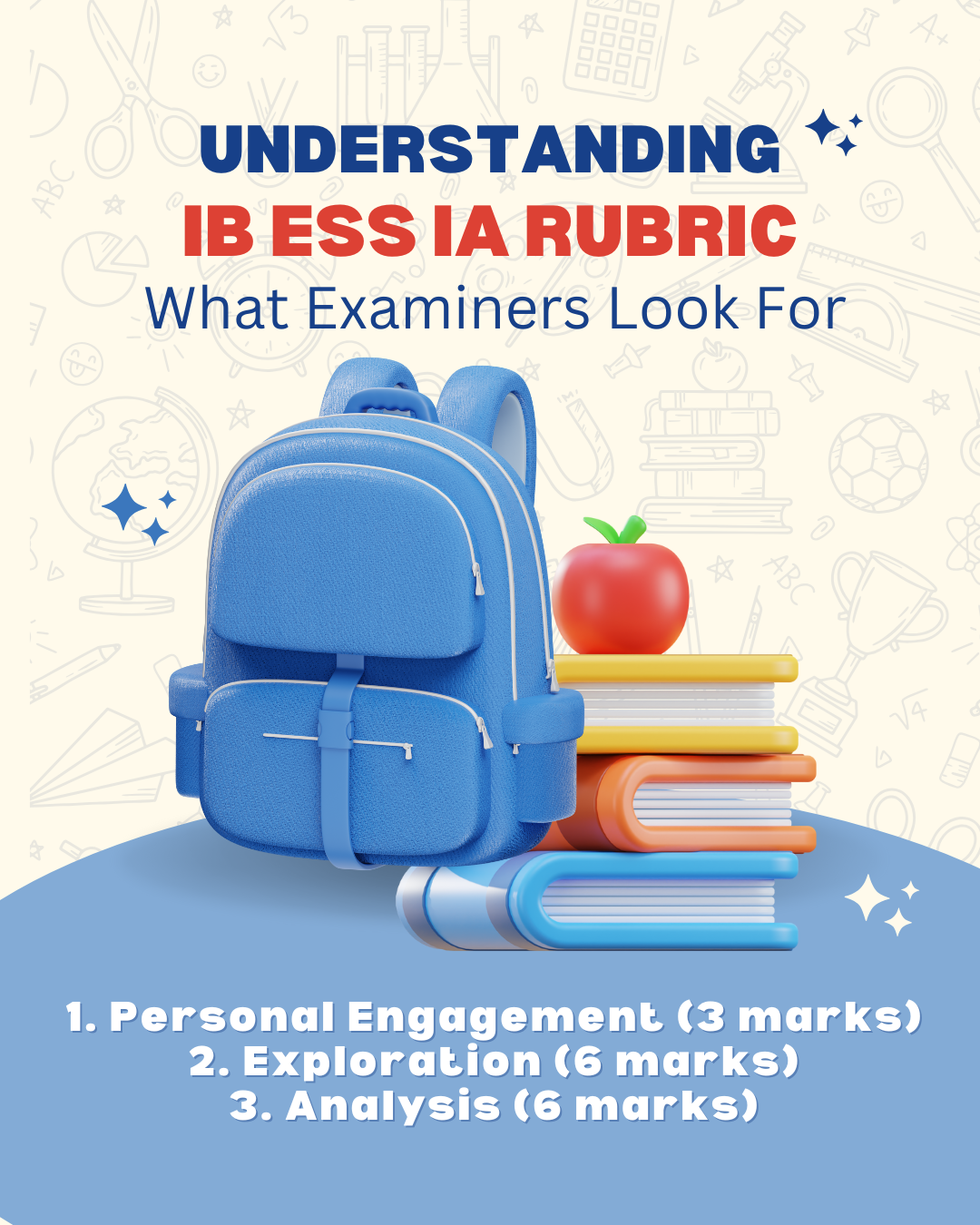
24 Apr Understanding the IB ESS IA Rubric: What Examiners Look For
When examiners assess your Environmental Systems and Societies (ESS) Internal Assessment (IA), they look for several key criteria to evaluate your work. Here’s a breakdown of what they focus on when it comes to the IB ESS IA Rubric:
-
Personal Engagement (3 marks)
Interest and Initiative: Examiners are looking for evidence that you are genuinely interested in the topic and that you’ve taken an active role in designing and carrying out the investigation. This could be reflected in how you approach the problem, your creativity in designing the experiment, and your enthusiasm for addressing an environmental issue.
-
Exploration (6 marks)
Clear Research Question: The research question must be focused, relevant, and feasible to investigate. Examiners will assess how well the question connects to environmental systems and societies and whether it can be effectively addressed through experimentation or fieldwork.
Design of the Investigation: A strong IA includes a clear and logically planned experimental design. This includes well-defined variables (independent, dependent, and controlled), a detailed methodology, and a clear rationale for choosing the experimental approach.
-
Analysis (6 marks)
Data Collection: The data must be well-organized and comprehensive. Examiners look for clarity in how you collect and present the data (e.g., tables, graphs) and if it’s sufficient to answer the research question.
Limitations and Sources of Error: Examiners want to see that you’ve thought about any limitations in your experiment or errors that could have affected the results. This includes potential biases, human error, or equipment limitations.
Suggestions for Improvement: Examiners value constructive feedback in this section. You should suggest realistic ways in which your experiment could be improved, or how future research could build on your findings.


No Comments